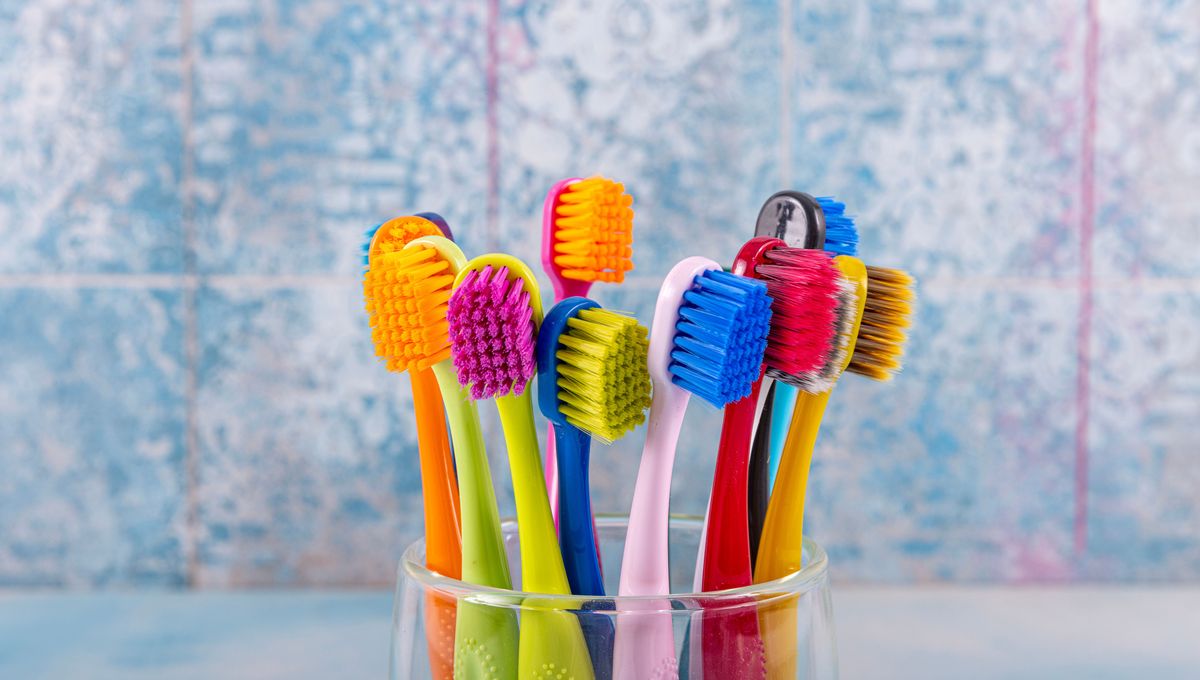
Germophobes may be horrified, but bathrooms are rich locations for biological diversity, with so many species living side-by-side that most have yet to be recorded. When it comes to the black mold you really should have cleaned off months ago, that can be a health hazard, but a wealth of new discoveries on toothbrushes and showerheads are neutral or actively good for us.
There are far more bacterial cells in the world than there are animals, or even animal cells. Consequently, one of the largest nodes in the web of life are bacteriophages (often known as just phages) – viruses that infect bacteria.
Large here means in terms of numbers of species, since phages themselves are tiny. This, combined with the fact they are no threat to us, means they have been severely understudied. A team led by Dr Erica Hartmann of Northwestern University is seeking to make a small dent in the mountain of ignorance on the topic without needing to stretch their research grant to cover travel costs.
Hartmann and her colleagues had people provide them with 34 toothbrushes and biofilm samples from 96 showerheads, whose DNA or RNA they studied. It’s easier to drop an old toothbrush off than bring in a showerhead, but the showerheads were collected nationwide, while the toothbrushes were all from the area around Evanston Illinois.
“The number of viruses that we found is absolutely wild,” Hartmann said in a statement. “We found many viruses that we know very little about and many others that we have never seen before. It’s amazing how much untapped biodiversity is all around us. And you don’t even have to go far to find it; it’s right under our noses.”
Genomes were obtained for 614 viral operational taxonomic units (OTUs), the equivalent of species, although only 22 of these were complete, indicating the challenges of studying surfaces not optimized for the purpose. The authors also note that extraction and sequencing techniques are less developed for non-pathogenic viruses than more studied forms of life, and that enhancements are needed.
The work is a follow-up to previous studies that reached less attractive conclusions, looking for bacteria on the same surface. While not all the bacteria lurking on toothbrush bristles are bad for us, they’re much more likely to be a threat than the viruses. In fact, by preying on the bacteria, pathogenic strains included, the phages could be doing us a great deal of good.
“This project started as a curiosity,” Hartmann said. “We wanted to know what microbes are living in our homes. If you think about indoor environments, surfaces like tables and walls are really difficult for microbes to live on. Microbes prefer environments with water. And where is there water? Inside our showerheads and on our toothbrushes.”
Add in the possibility of an aerosolized spray of fecal bacteria every time someone flushes the toilet without closing the lid, and the potential for wet bathroom locations to be hotspots needed to be checked. Hartmann called the project “Operation Pottymouth” to reflect this concern.
Unsurprisingly, sites that had more types of bacteria had more diverse microbiomes of viruses that infect them. Toothbrushes also had more OTU variety than showerheads, presumably because they were sourced both from users’ mouths and the water supply.
However, the standout observation of the phage study is that there is little commonality between those found in different people’s bathrooms, even among people living in the same city and possibly social circles. More than half the OTUs were only found in one sample.
“We saw basically no overlap in virus types between showerheads and toothbrushes,” Hartmann said. “We also saw very little overlap between any two samples at all. Each showerhead and each toothbrush is like its own little island. It just underscores the incredible diversity of viruses out there.”
Of the phage OTUs found, the most common category was mycobacteriophages, which, as the name suggests, infect mycobacteria, which are themselves responsible for some chronic lung infections and diseases we should have left in another century, tuberculosis and leprosy. Leprosy may be very out of fashion, but TB was the number one infectious disease killer until COVID-19 emerged; it’s likely to reclaim its crown soon if we don’t invest in solutions. Phages have lived in the shadow of antibiotics for 80 years, but some argue their time is near, and certainly having a wider variety to choose from has its advantages.
That’s one of the reasons Hartmann doesn’t want people to respond to her work by upping their use of disinfectants. Although she encourages the regular replacement of toothbrush heads, she points out that too much reliance on antimicrobial agents just leads to antibiotic-resistant bacteria. A healthy ecosystem where phages keep the most abundant bacteria in line is much healthier.
“Microbes are everywhere, and the vast majority of them will not make us sick,” she said. “The more you attack them with disinfectants, the more they are likely to develop resistance or become more difficult to treat. We should all just embrace them.”
The study is open access in Frontiers in Microbiomes.
Source Link: Your Toothbrush Is A Viral Biodiversity Hotspot – And It’s A Good Thing